Rebuilding the Alpine Cushion House, RHS Wisley
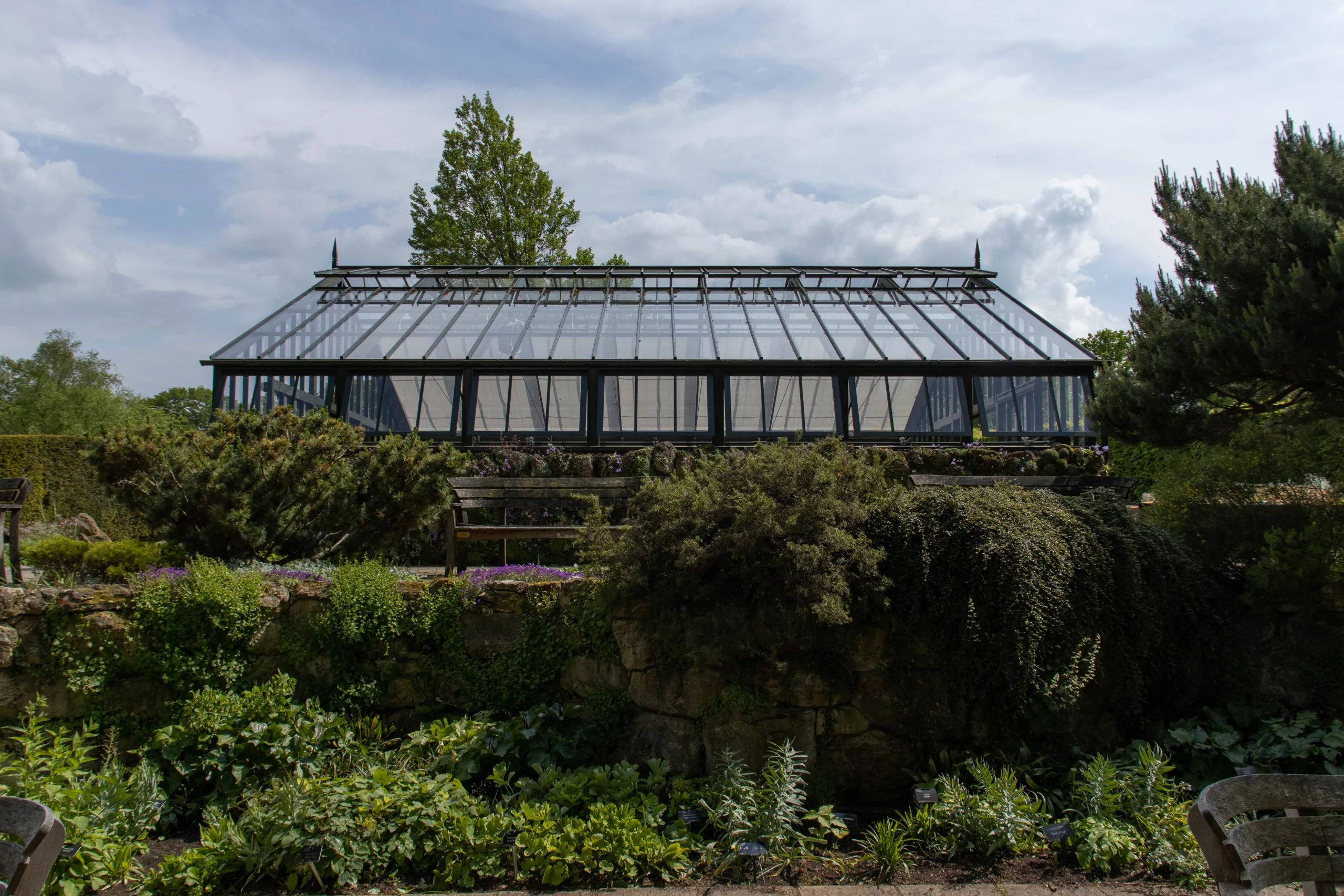
Recently, we paid a visit to RHS Wisley to see progress on the new Alpine House which we’d installed for them just before last Christmas. Alex Hankey, one of the team leaders at Wisley, and responsible for the Alpine houses, was on hand to give us some insight into the painstaking task he and his team are now carrying out. It was exciting to get a behind-the-scenes glimpse of some of the fantastic work going on in this RHS garden.
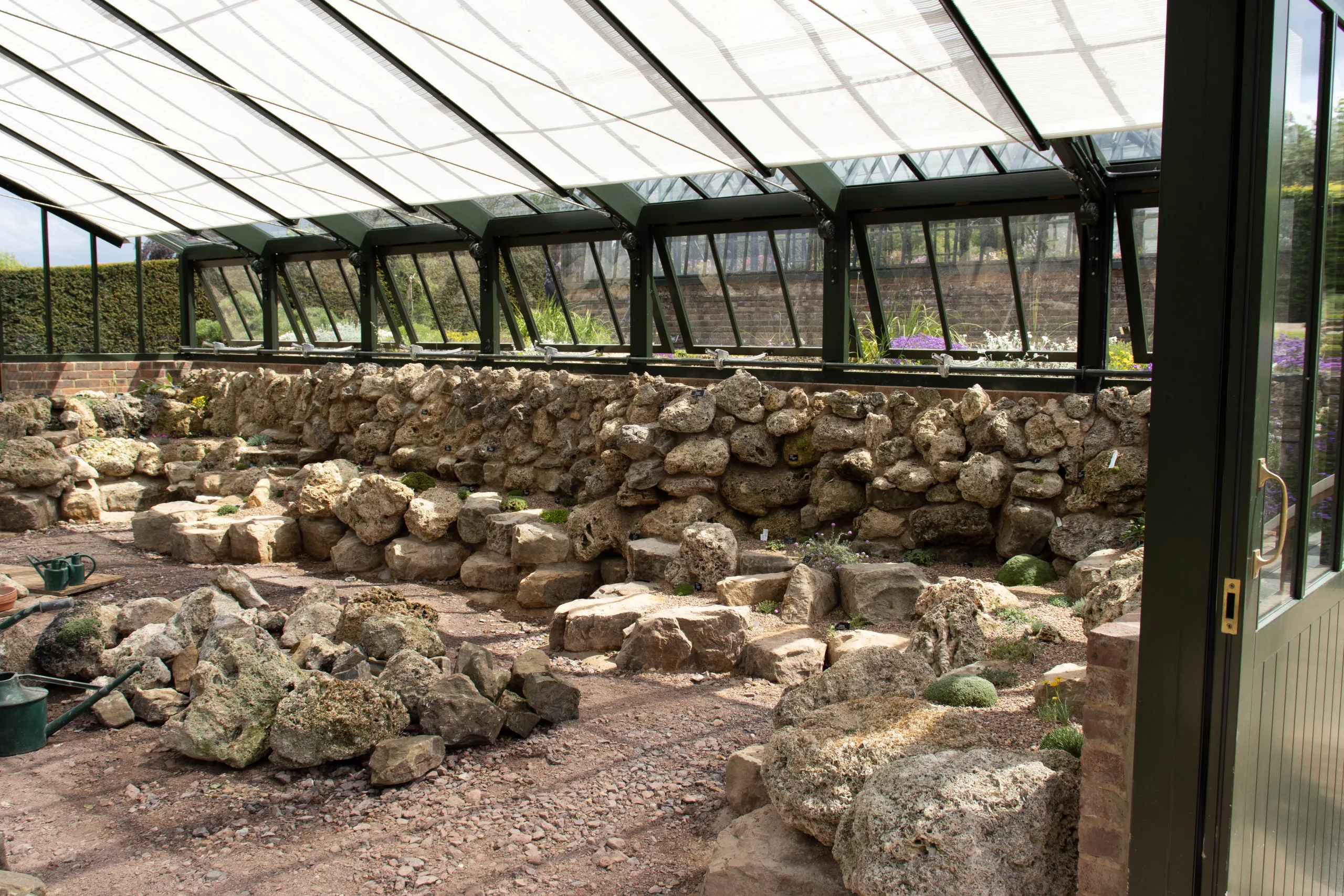
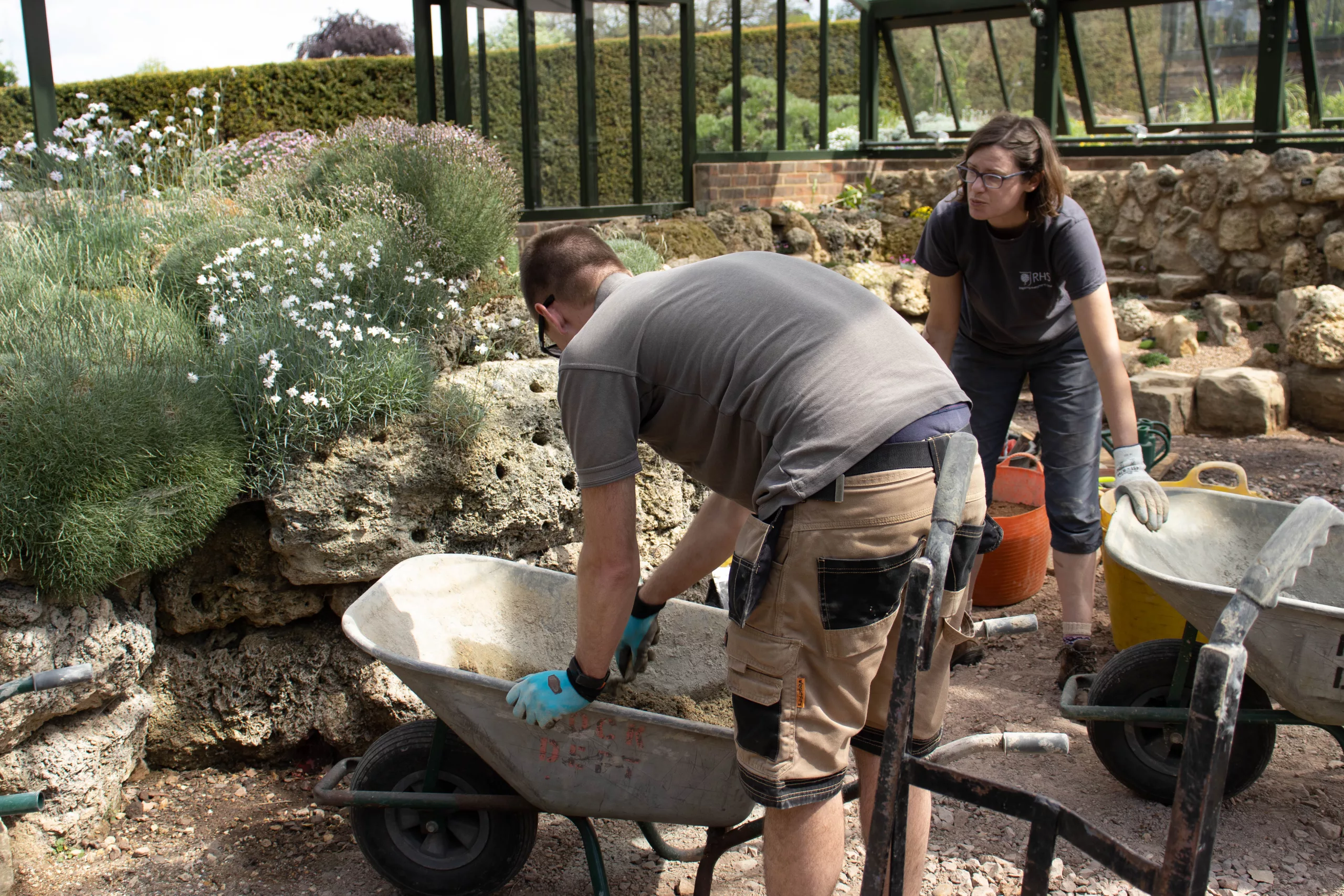
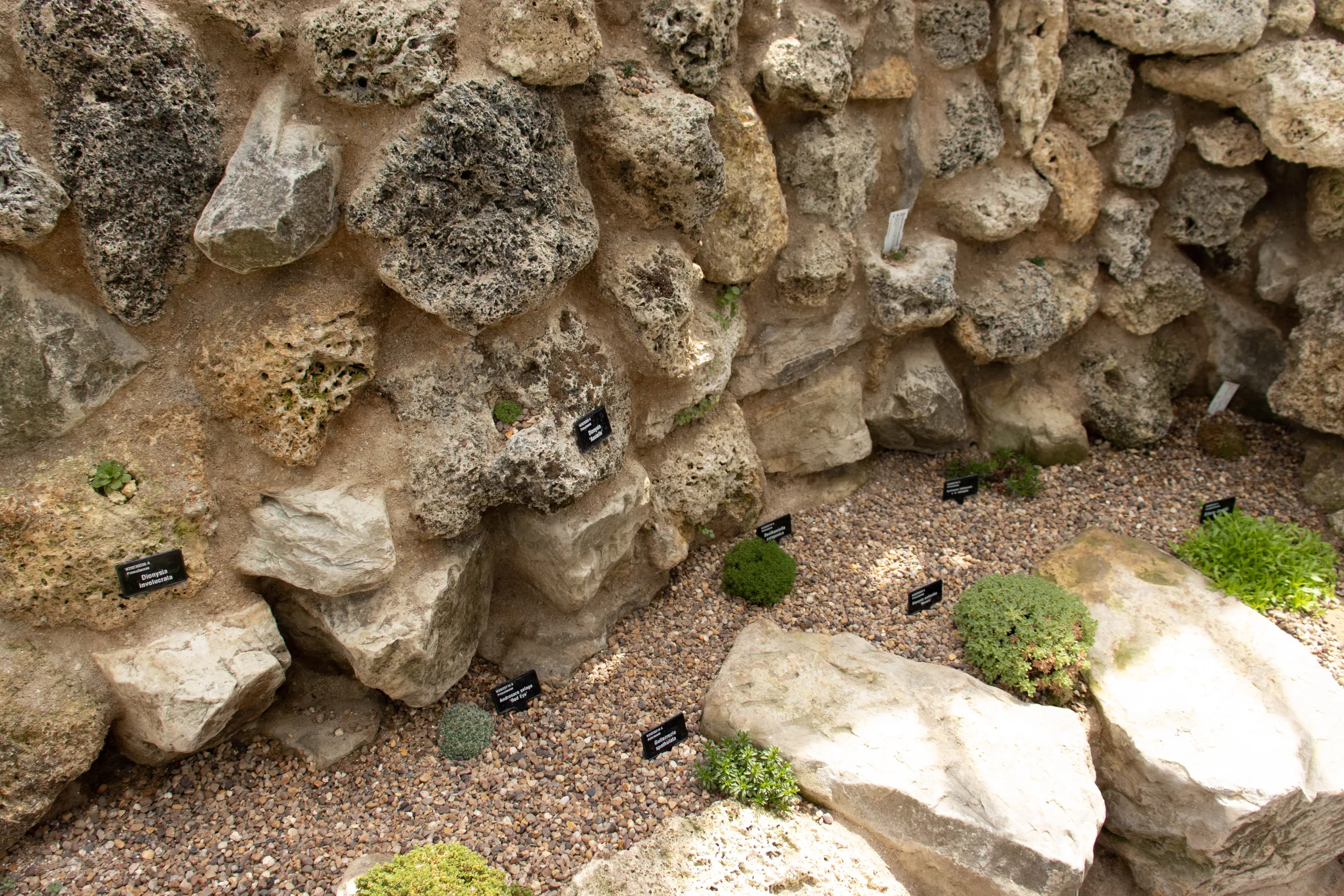
In July 2021 the Garden Manager at RHS Wisley, Emma Allen, contacted us, marking the start of this project. She’d heard from the team at RHS Bridgewater that we might be the right partner for them in replacing and upgrading Wisley’s existing Alpine House. The current aluminium structure had begun to pose a safety concern but it was old and home to many specimen plants. Rehousing and protecting the plant collection, dismantling the old building and installing the new one would require careful choreography. All whilst the surrounding area remained open to the public.
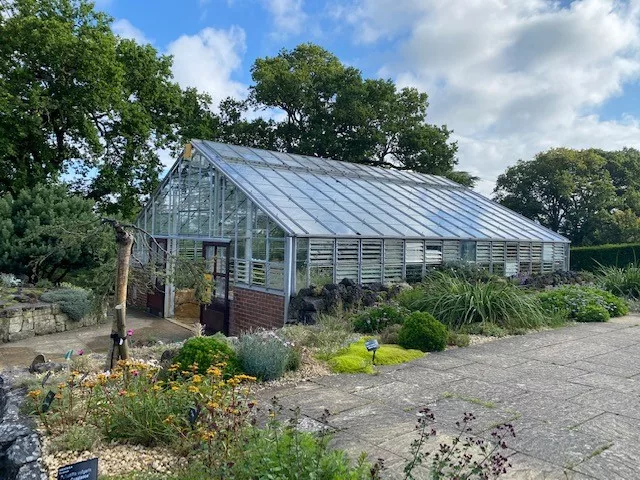
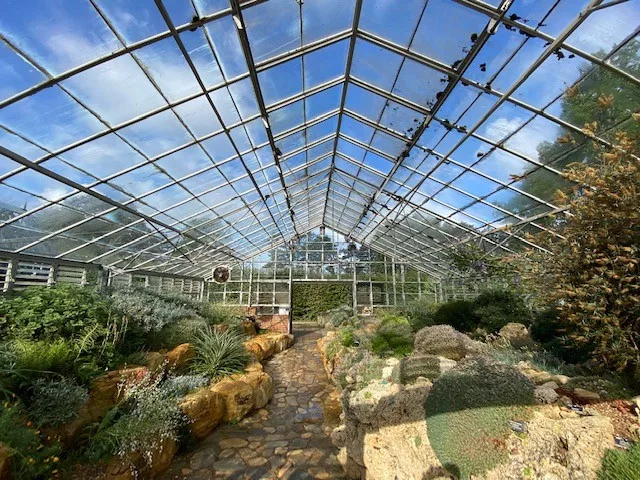
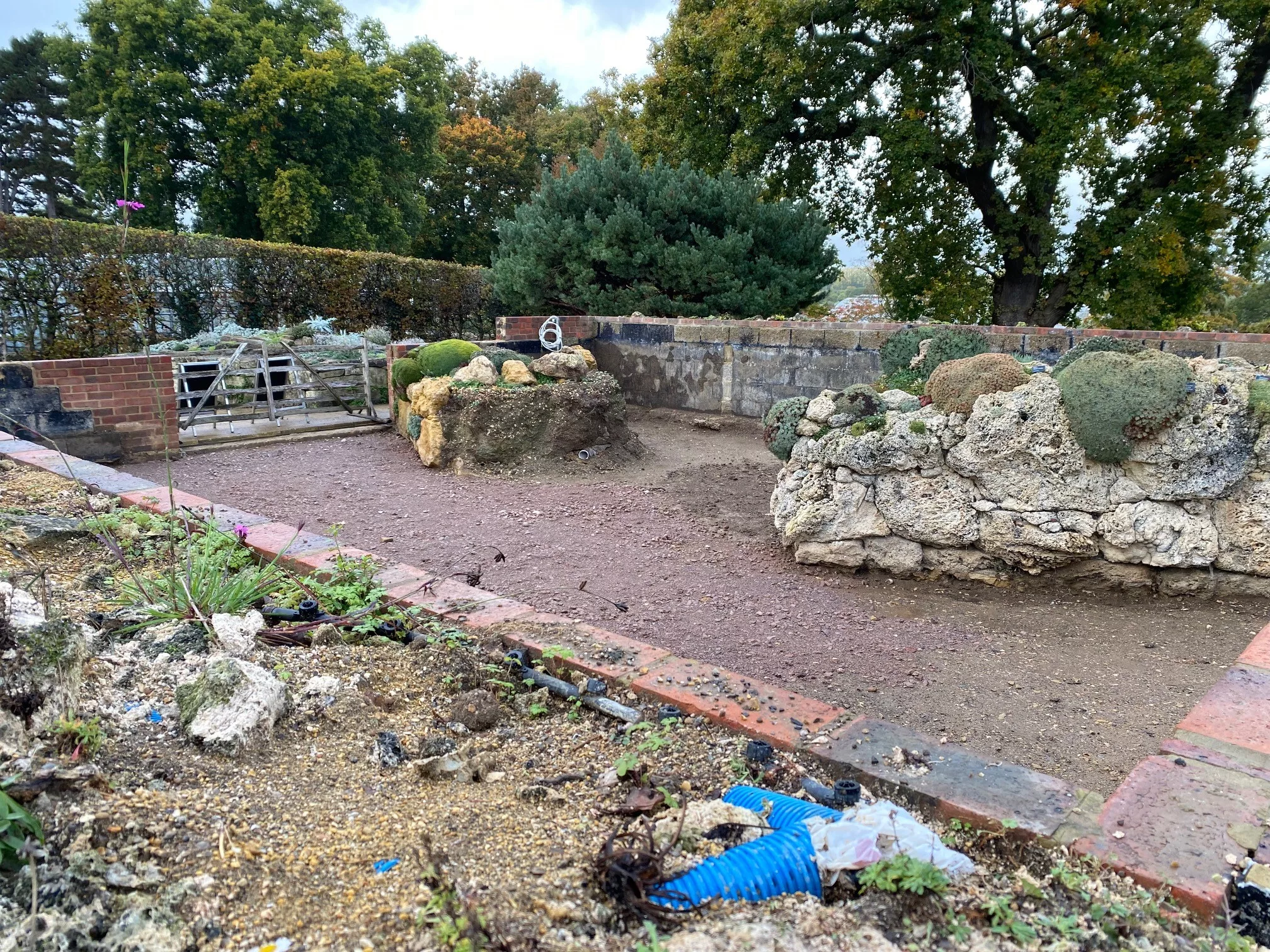
From our point of view, the project posed several challenges, not least from a design perspective. A relatively high brick base wall surrounded both inside and out with a rockery formed the base of the incumbent glasshouse. Itself home to many plants and very much part of the house’s infrastructure. Whilst there was some scope for adjustments, we just needed to work around many of the original features. And the footprint of the building – fairly square – could not be changed.
Alpines prefer windswept and arid conditions and so ventilation would be key. We therefore had to retain the original large sliding doors which allow air to pass through the house unimpeded. A more traditional hinged door of this size would be impractical and unwieldy. Using traditional joinery methods, the new doors are now made from Accoya® and painted in our workshops using Teknos paint in a custom colour. And we’ve used solid brass ironmongery handmade in Birmingham by Croft Architectural Hardware.
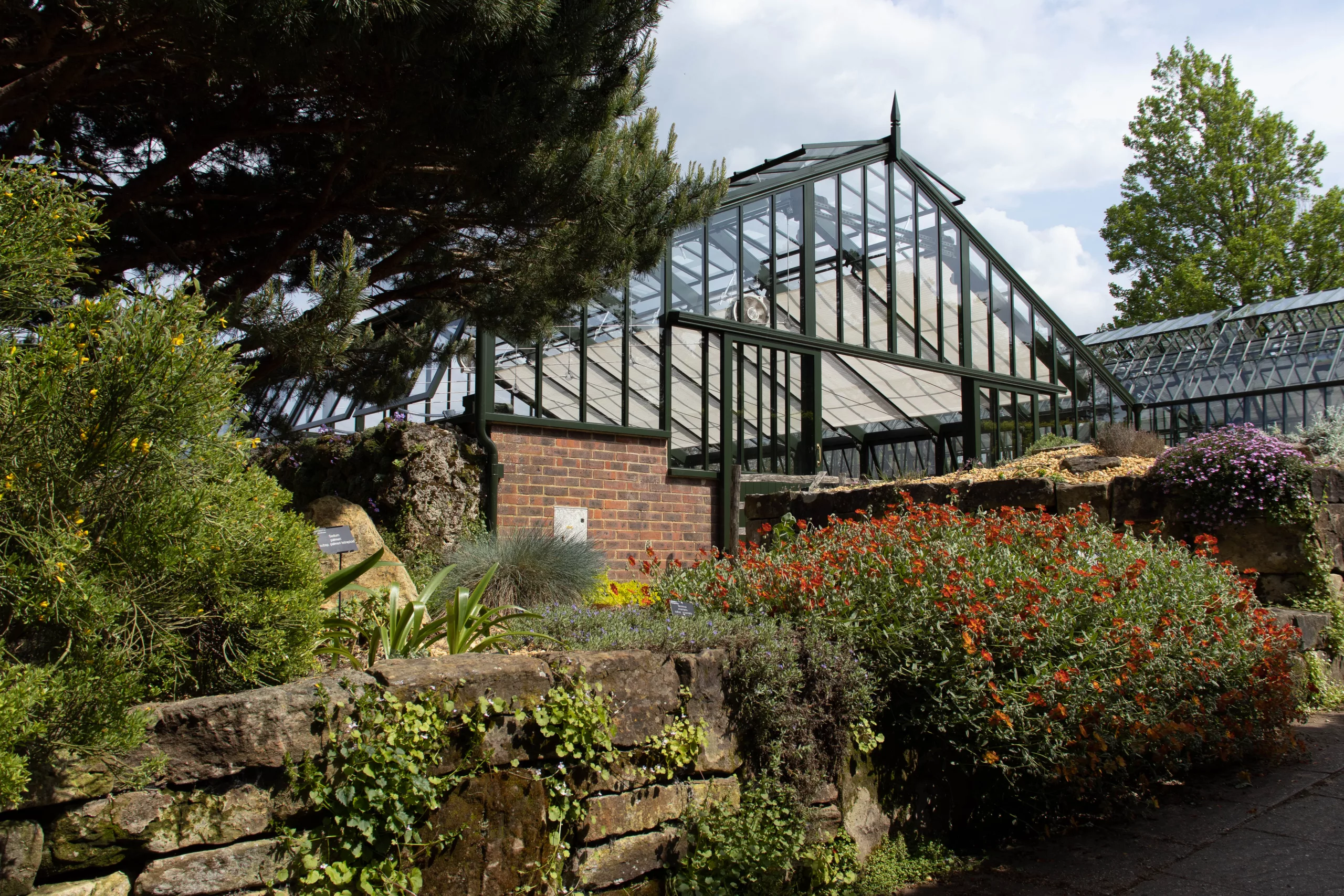
The span of the building necessitates our Victorian specification, with heavy timber rafters and mullions placed at regular intervals. In this case, additionally strengthened with bespoke tie bars. Our full Victorian roof vents were perfect for maximising the ventilation and we optimised this further by maximising the length. This still left us with pieces of roof glass half a meter wide by almost 4m in length to handle. A challenge for both us and our glass supplier!
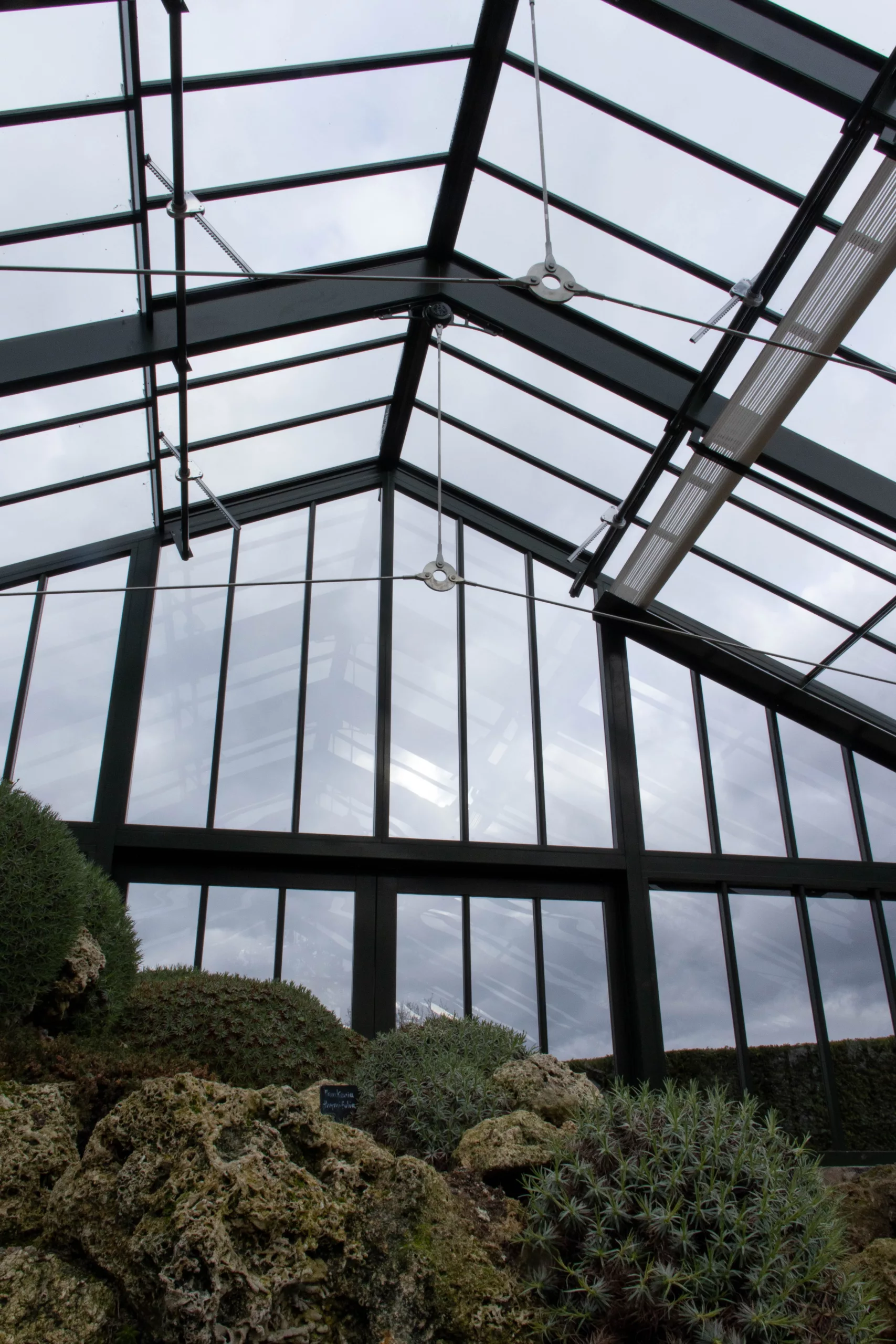
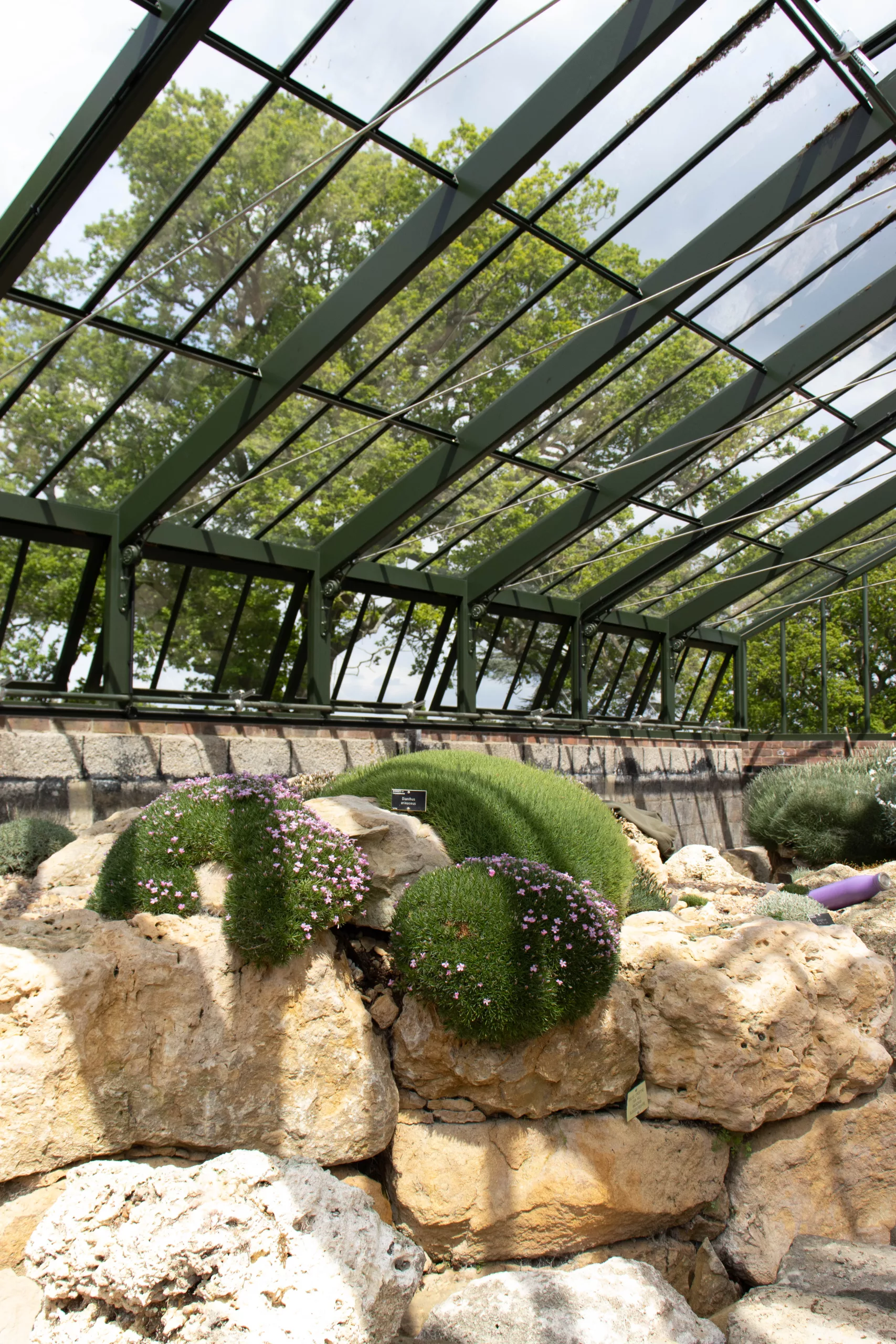
All ventilation is controlled automatically and modifications in the roof enable shading experts Selman to fit their blinds. The blind fabric, chosen for it’s high breathability, also blocks the intensity of the sun without interfering with air flow. With some alpines vulnerable to scorching, the new shading is a welcome addition for Alex. He explains the old house had no shading at all and this was causing concern for some of the plants.
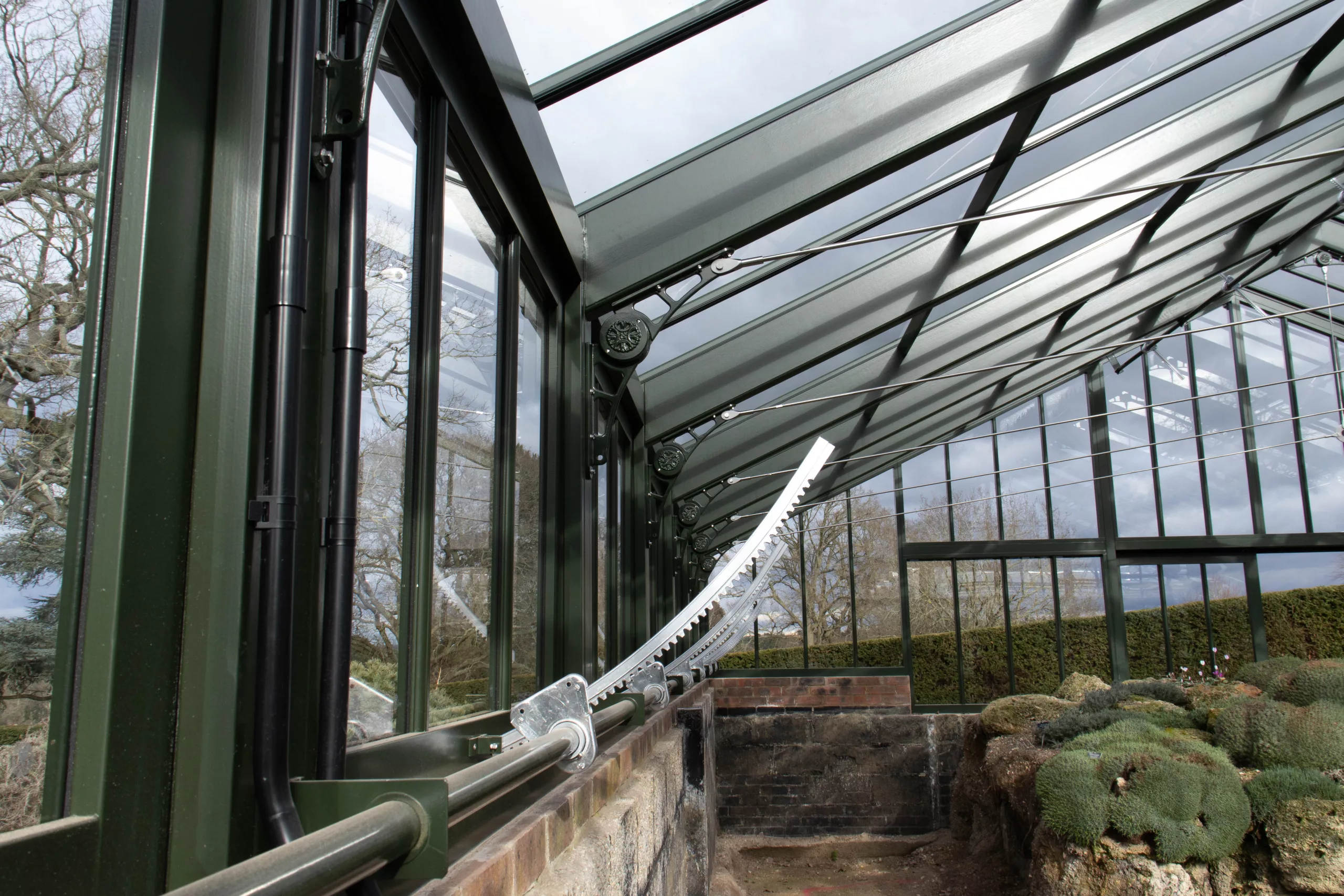
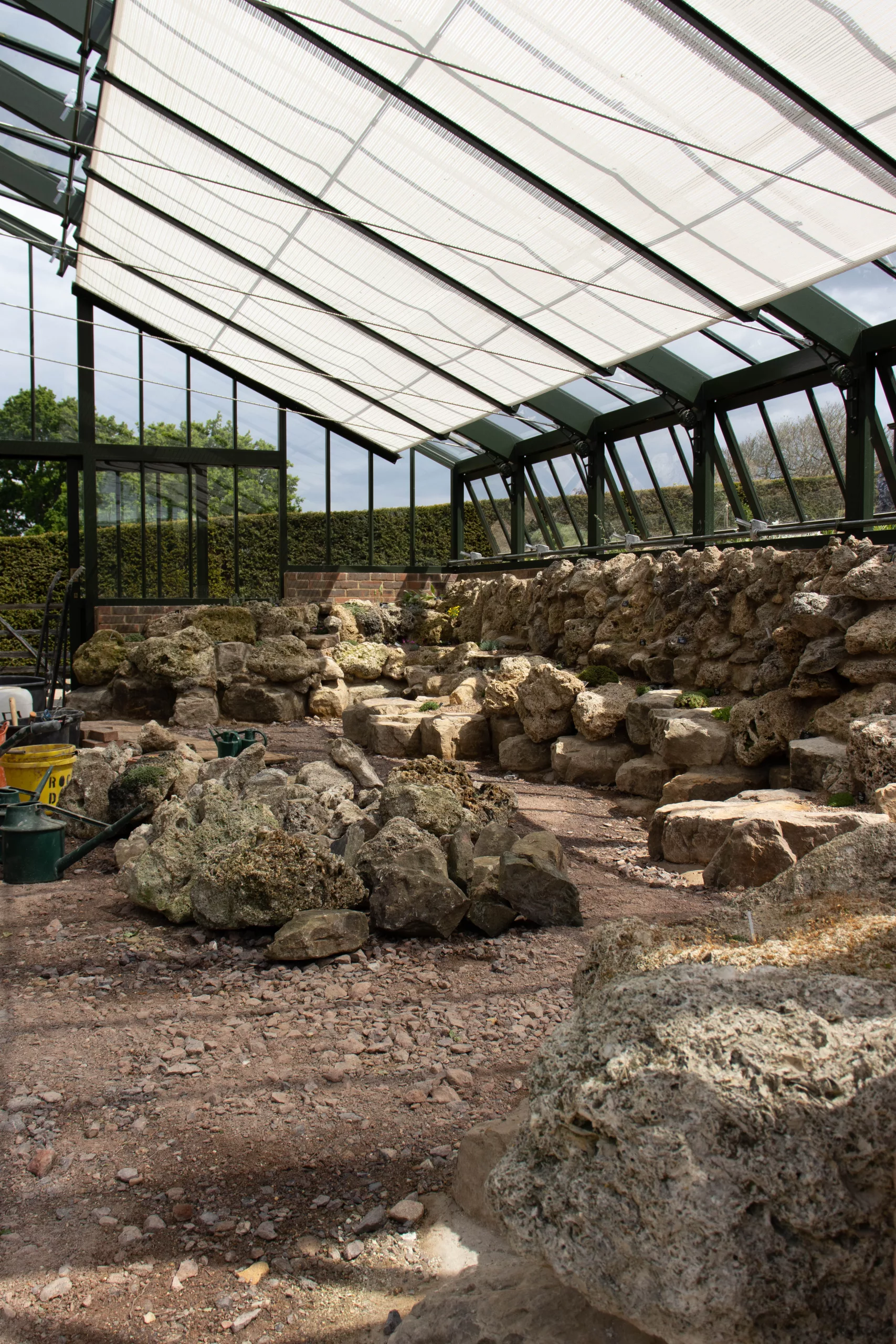
The Alpine Houses sit at the summit of the rock gardens in RHS Wisley. A feature introduced in 1912 to capitalise on the naturally dramatic hillside found in this part of the garden.
“The objective was to emphasise the existing landscape by showcasing some unexpected plants that relish the exposed, well-drained and rocky aspect”
In the 1970’s the Wisley team added the glasshouses to extend the scope of plants they could successfully grow.
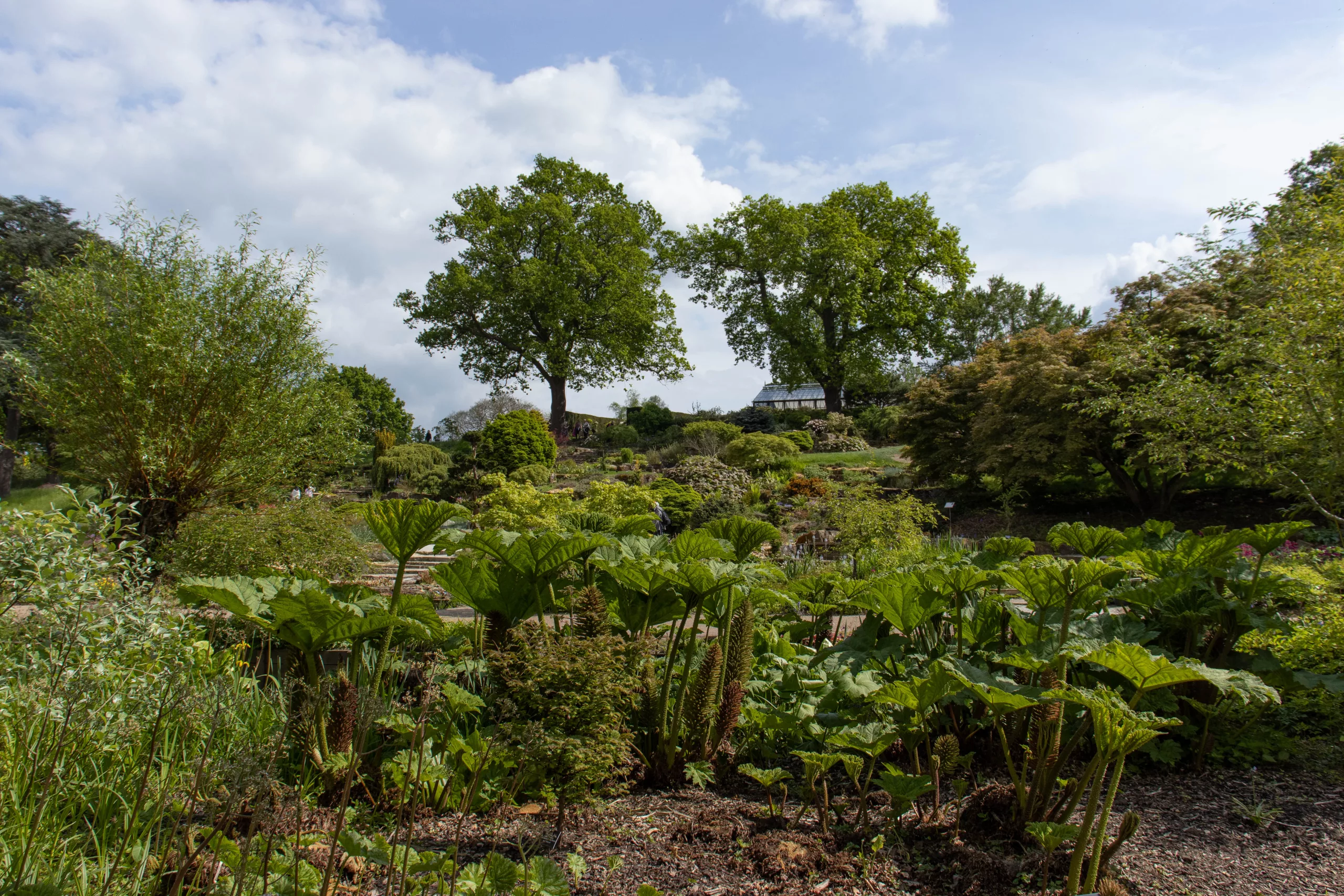
There are currently two alpine houses, the smaller of which contains the potted collection. The cacophony of petite and immaculate flowers standing to attention is always a joy to see. But, Alex explains, relatively straight-forward to maintain compared with the larger house.
The concept the Landscape House is to mimic the plant’s natural habitat as closely as possible. However, over the years the display had become very overgrown, making it difficult to appreciate each delicate plant. And there were even some “rogue” non-alpine invaders that had sneaked in.
Removal of the old house provided a great excuse for a clear out and a rethink. Renewing the structure presented the perfect opportunity to explore untapped potential.
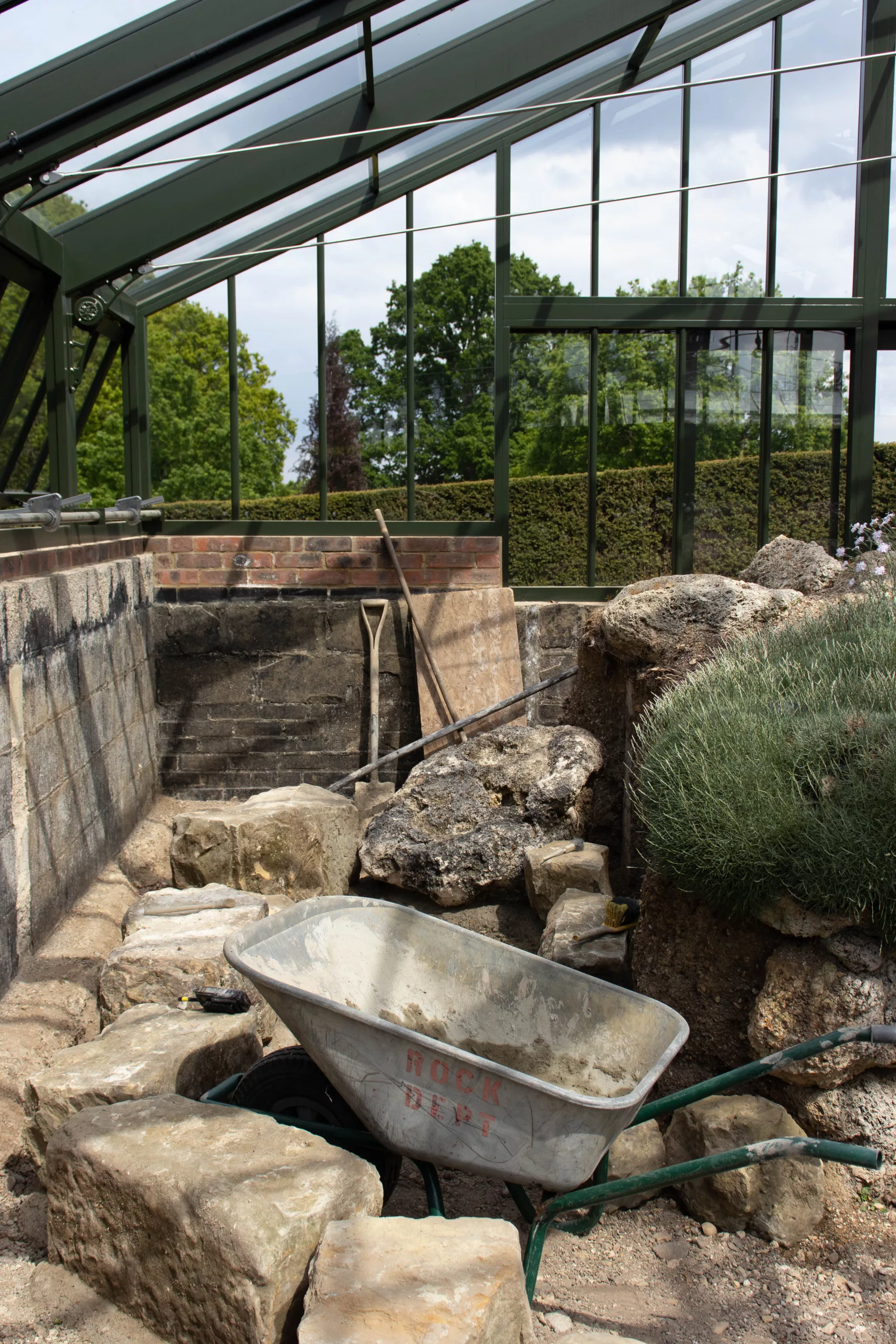
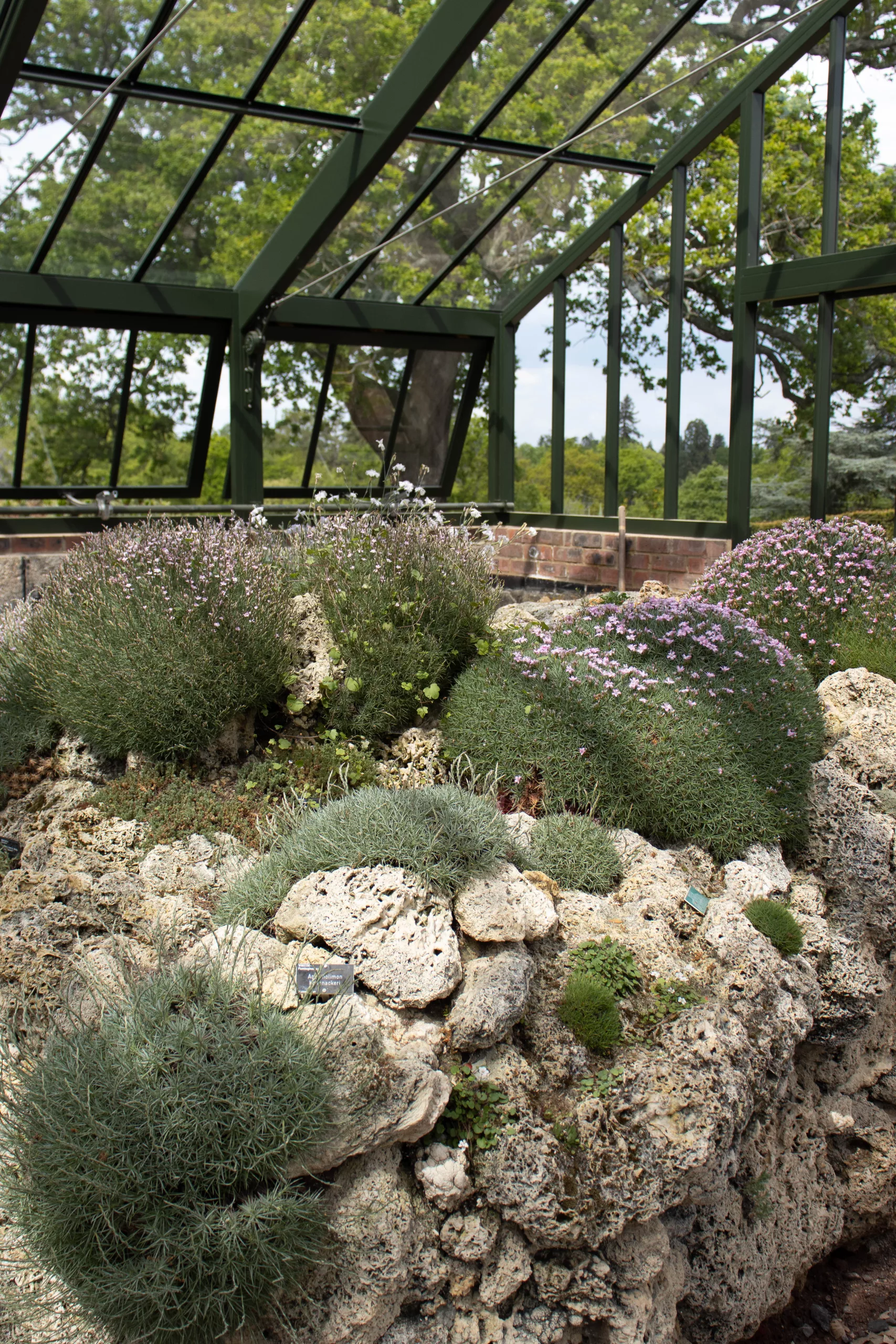
Originally there was a slightly curving, cobbled path of stone wending its way from one side to the other. With waist-high planting set in a mound of rocks to either side. Most of this had to be removed to allow the removal of the old greenhouse without damaging the plants and enable the installation of the new building safely and efficiently.
Alex and his team started taking cuttings from all the plants in April 2022. The old house was removed in June, but it took until October to finish preparing the site. Delicate removal of most of the internal rockery and adjusting the original brick base took time.
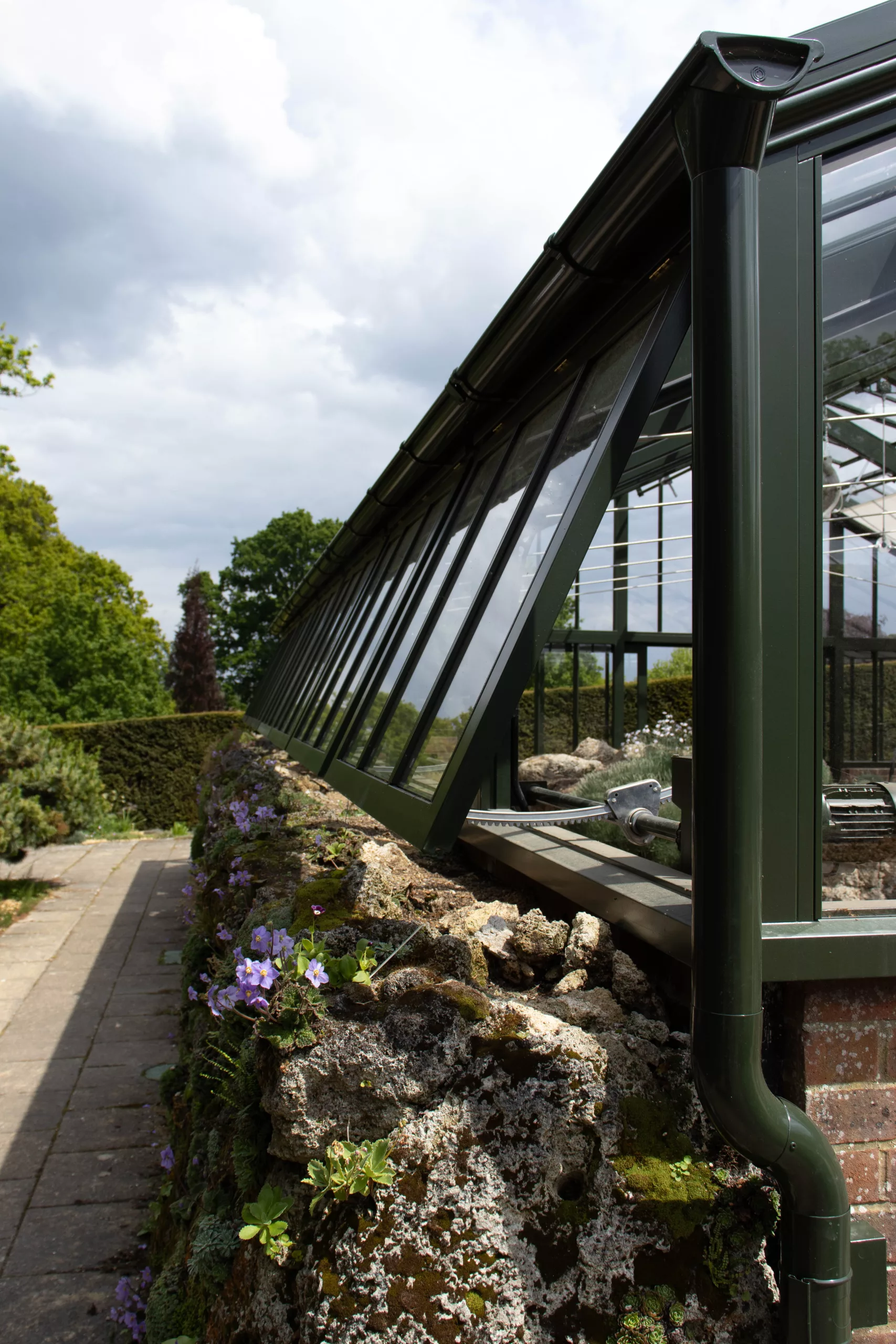
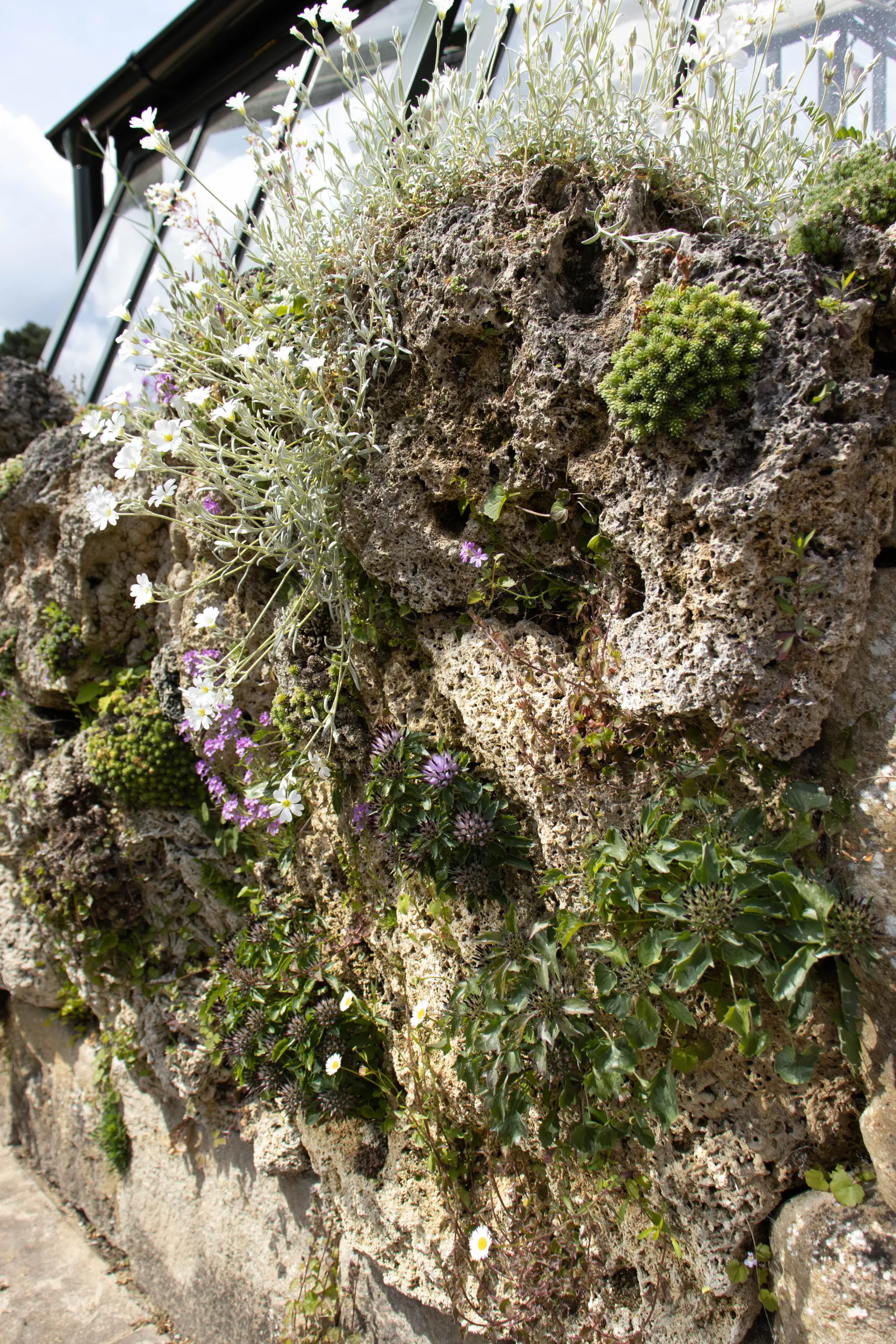
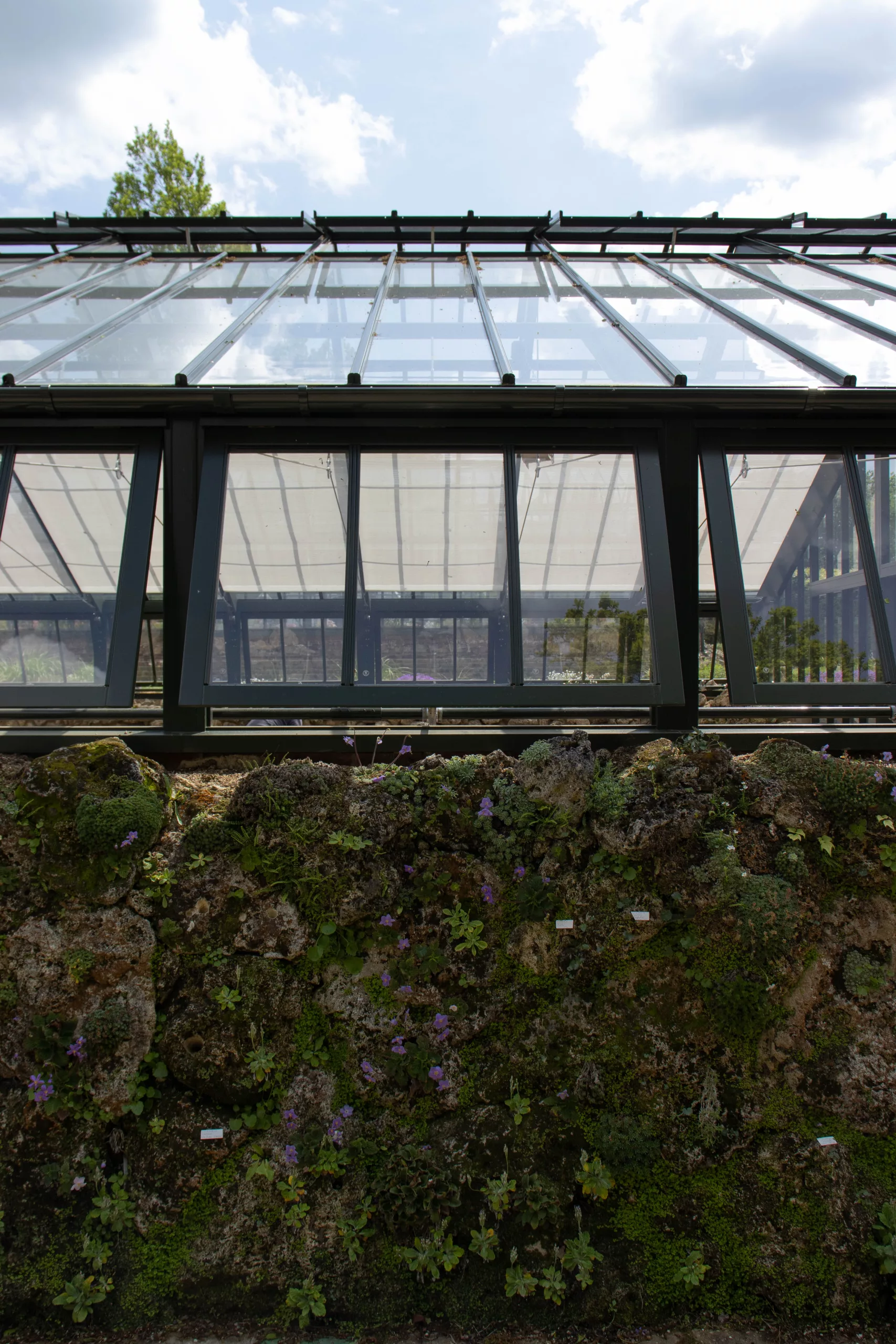
When I visit today, the replanting is really starting to take shape but progress is slow. The work began in March and I had expected to find it almost complete. But the team continue to wheel in barrow loads of compo as Alex carefully places every single individual lump of rock. Creating little nooks and crannies which will become home to these dainty and characterful plants. Some of the cuttings are so delicate, Alex needs to use tweezers to plant them. It brings to mind a Michelin-starred chef dressing a plate of food!
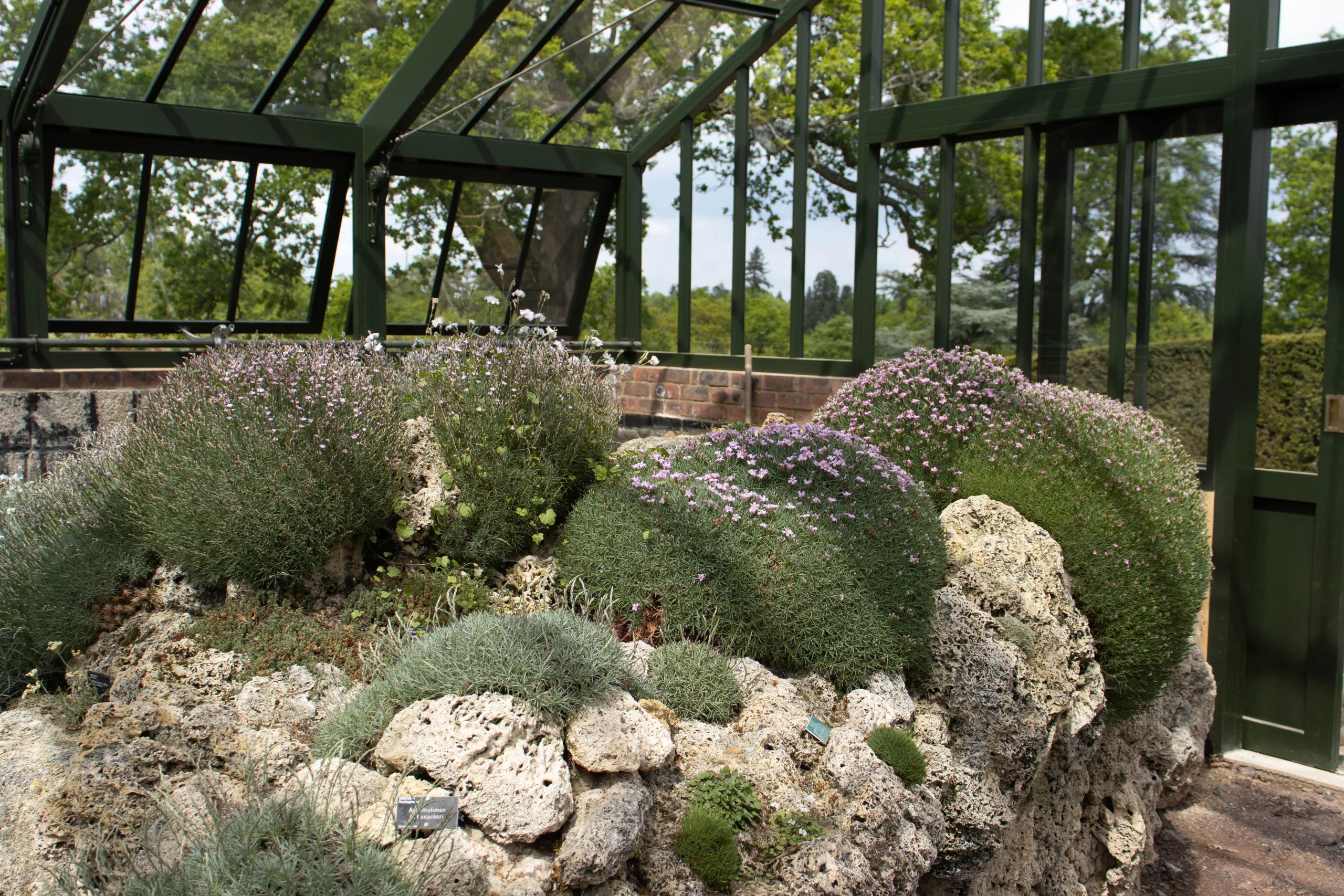
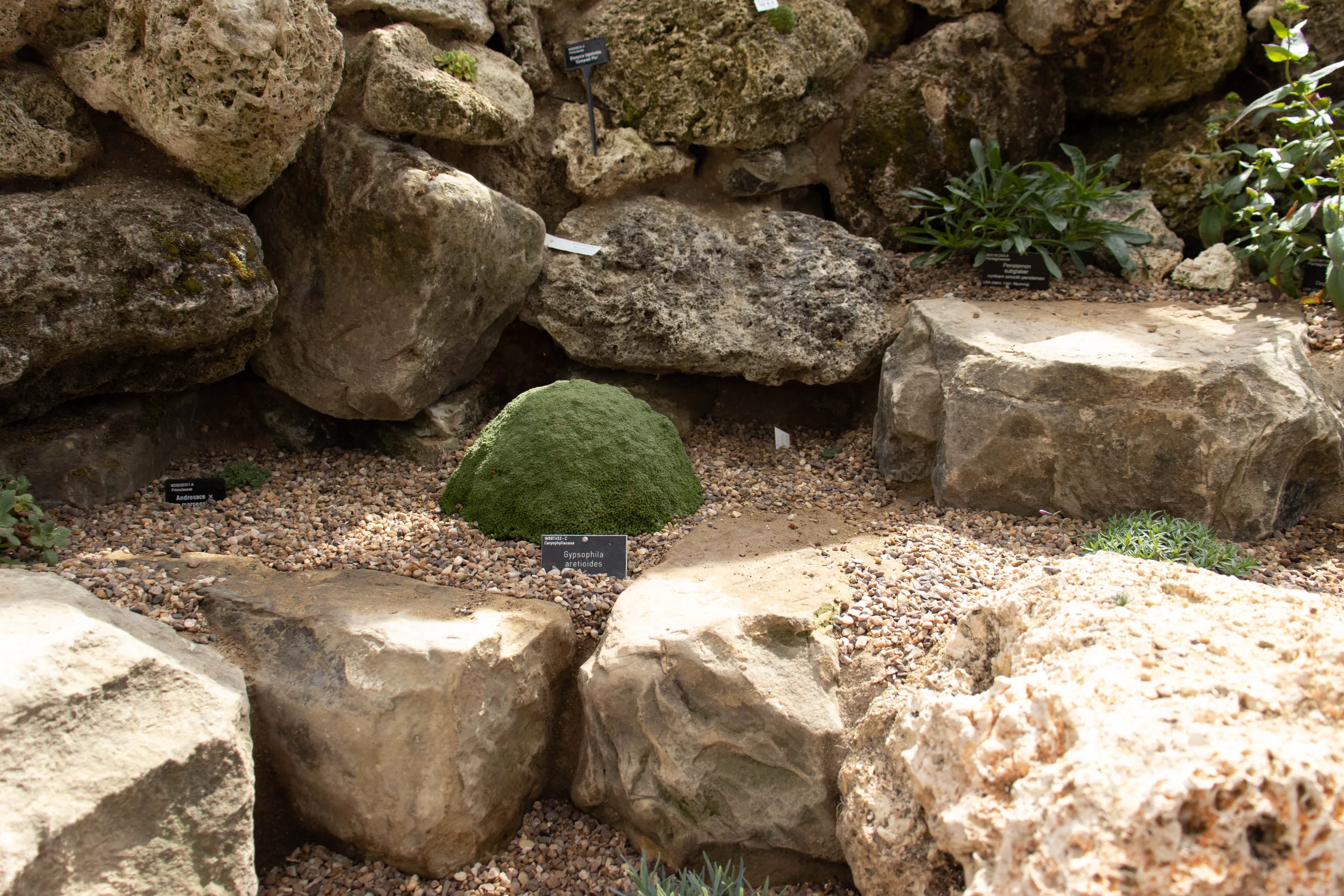
Alex tells me more about the stone he’s using – a combination of limestone, sandstone and tufa – a porous sedimentary rock made from calcium carbonate.
“These are the same rock types used in the main rock garden and we are either reusing stone that was here before or it’s been sourced from reclamation yards. It’s not newly quarried stone.”
The plants themselves are fairly typical of those found in similarly large collections – those at Kew for example. But the maturity and size of some of the plants at RHS Wisley is noteworthy. And their setting in this carefully crafted landscape allows us to enjoy them in a very special way.
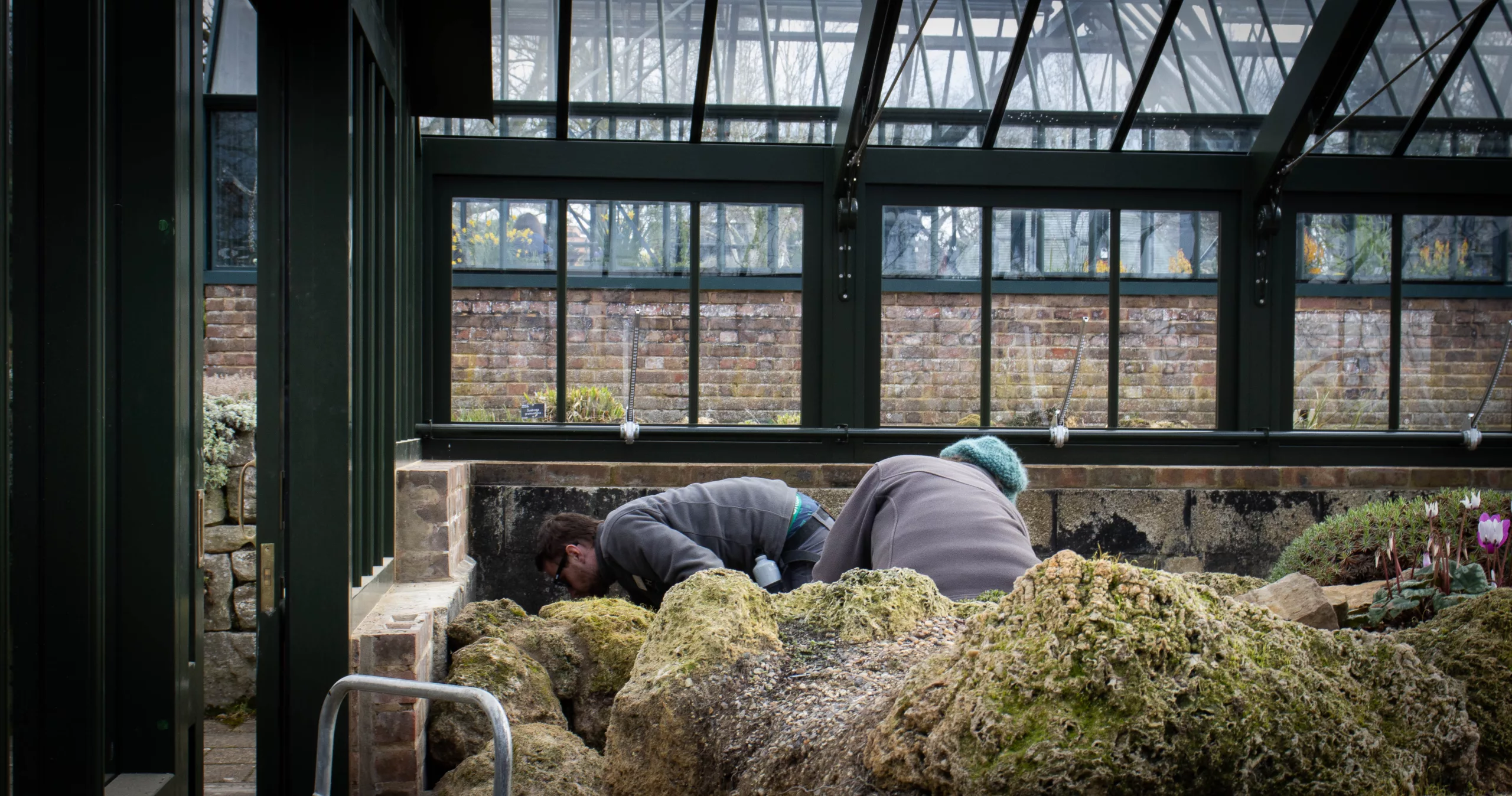
Following the completion of all the groundwork we began manufacturing the structure. We were in production for about 6 weeks, needing to phase each stage and make room for the oversized components. We then moved everything from our Cheshire workshops down to RHS Wisley is a series of van convoys. The installation was relatively quick – our team on site for just 5 days. Although the short days and the very cold weather continued to challenge us. Temperatures barely rising above freezing at any point. Very beautiful and at least it wasn’t raining, but challenging nonetheless!
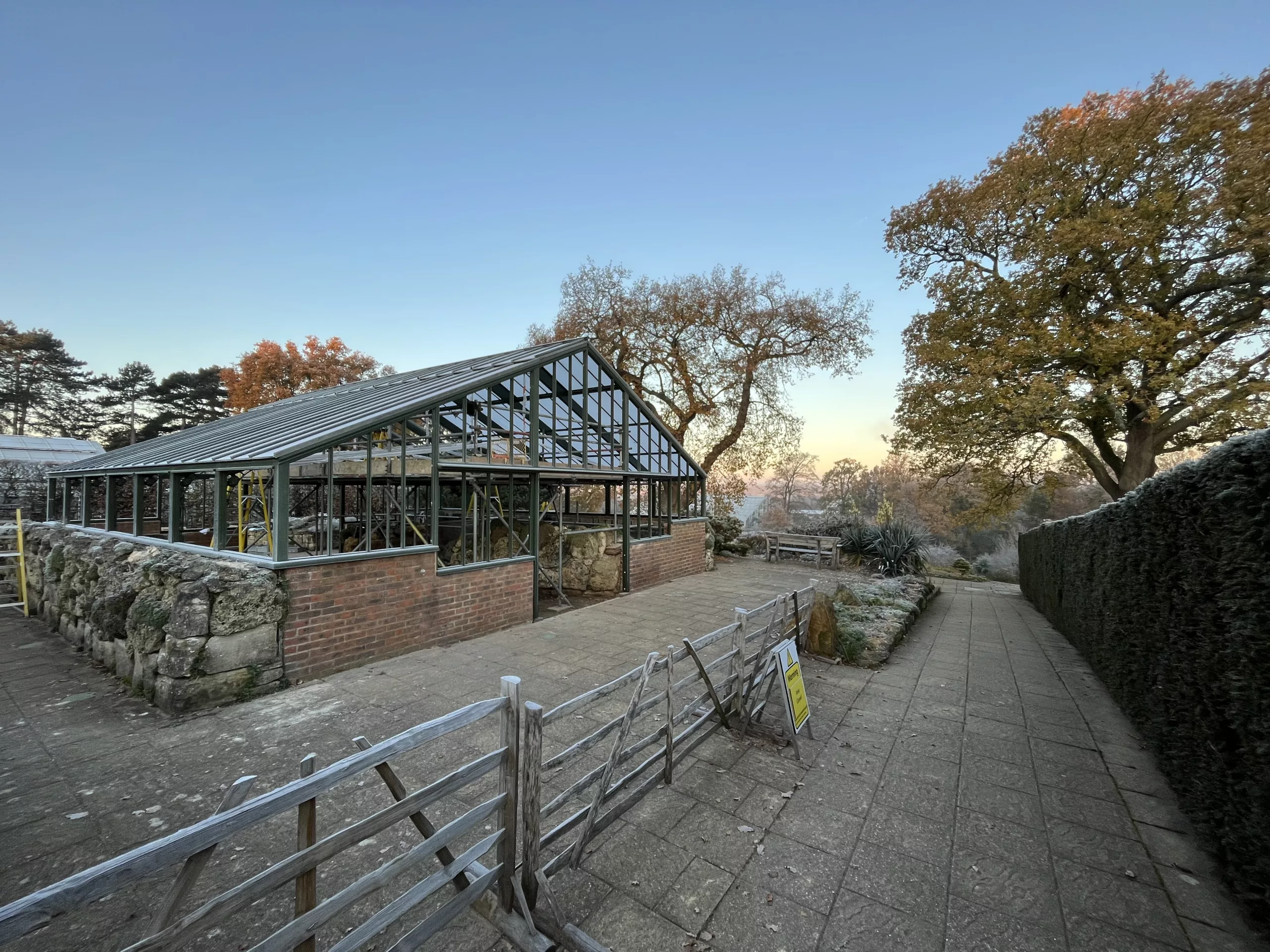
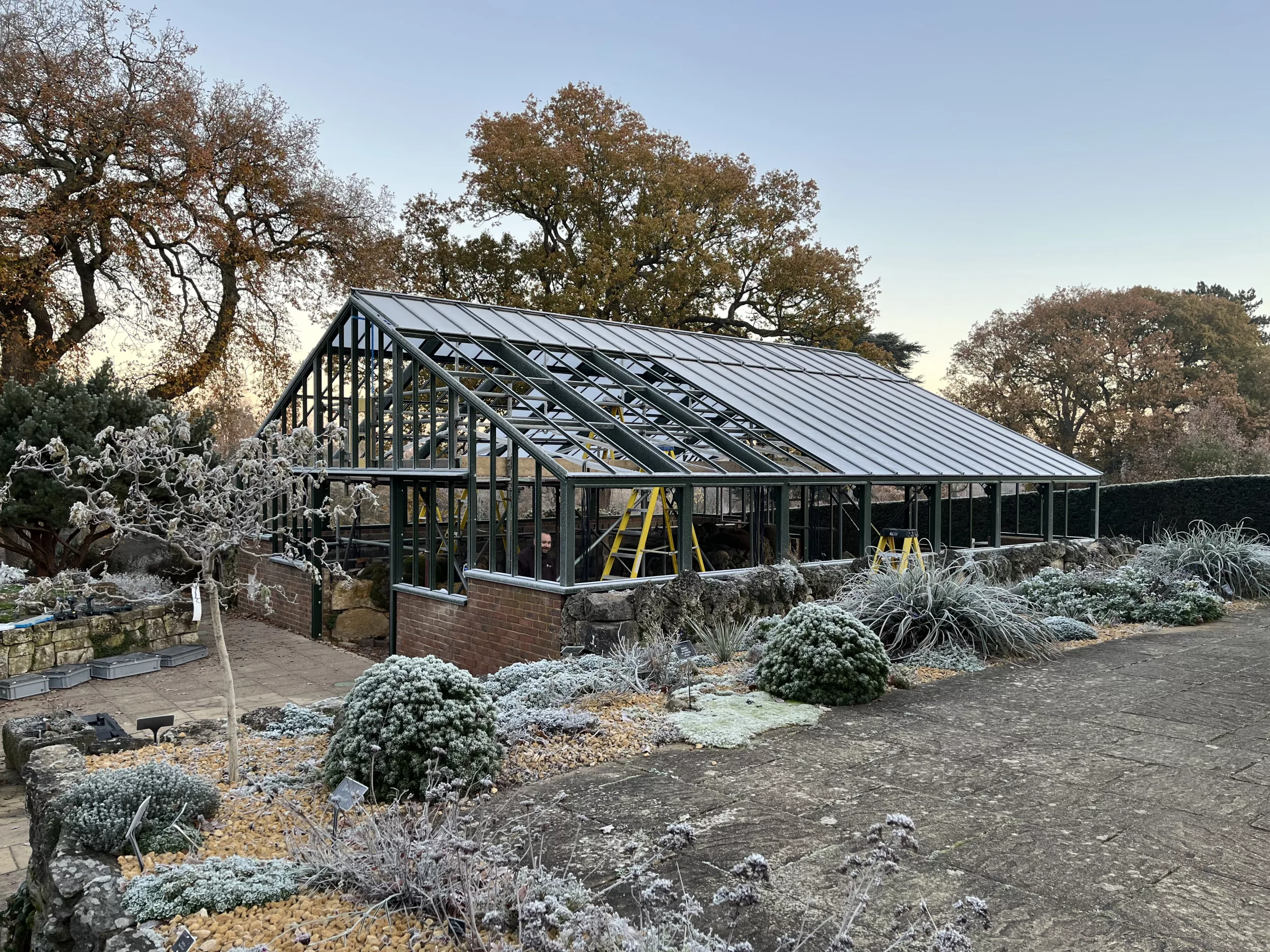
For now, Alex and his team have a bit more to do but the Alpine Cushion House, as it will become known, is due to open later this summer and we encourage you to visit when you can.
You don’t have to be the RHS or in need of a very large greenhouse to work with us. Read about a smaller bespoke project here, or perhaps one of our Signature buildings meets your needs.
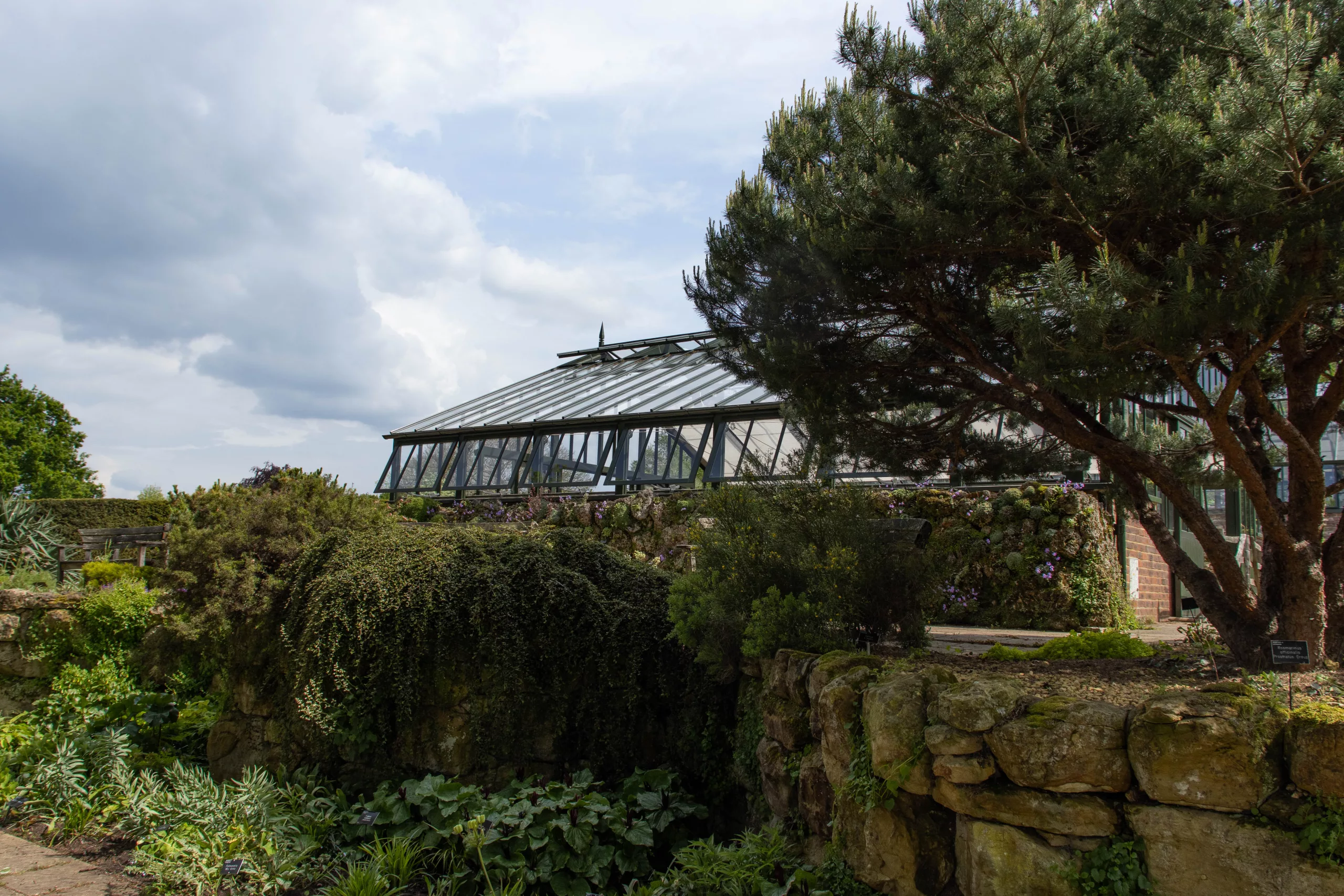
We worked with a number of key partners to deliver this project. They include James Latham, Accoya, Teknos, Tomtech, Selman and Croft Architectural Hardware.
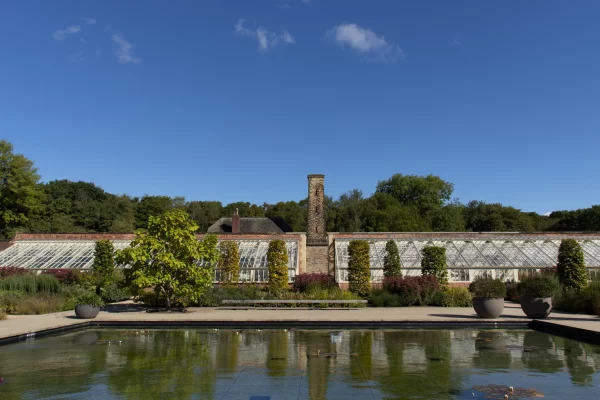
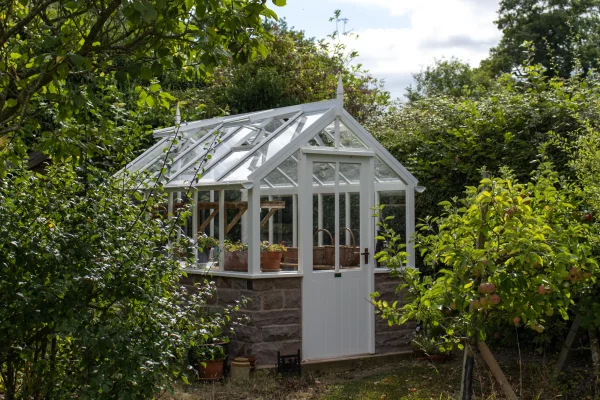
Comments
This article doesn't have any comments yet.